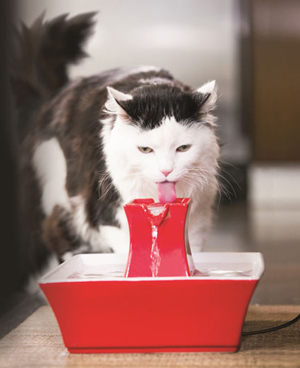Should Cats Get Tap or Filtered Water?

Cats Have Low Thirst Drives
First, it's important to understand that cats naturally have low thirst drives. In the wild, felines get most of their water from their food, which is prey. However, indoor cats don't get nearly as much water from their food, especially if they eat dry kibble.
Because of this low thirst drive, many cats are constantly dehydrated, and this can contribute to the development of kidney problems over time. Kidney disease results in further dehydration, and it is a deadly cycle.
Cats Can Be Finicky
Cats are known for their independence and for having their own minds. They are also often finicky about what they eat and drink, and they are sensitive to odors and tastes. This can affect their water consumption because if they don't like something about their water, they probably won't drink it.
Tip: Avoid plastic water bowls for your cat; they can leach unpleasant-tasting chemicals into the water and more easily harbor bacteria. Similarly, bottled water should be avoided for cats.
Water's taste can be affected by the bowl it's in, whether it's city water, which has a variety of chemicals in it, or well water, which may contain more minerals.
Should You Provide Tap or Filtered Water for Your Cat?
Giving your cat filtered water from the tap is probably the best option. A simple filter, available to attach to your faucet or in a pitcher that you refill, will remove most objectionable odors and tastes for your cat.
Another great way to provide water to your cat is with a drinking fountain. These contain filters that remove chemicals from the water, and they keep it moving so it doesn't have time to grow bacteria.
Cats also tend to drink running water better than standing water, so fountains can encourage increased water consumption. When you first get a fountain, leave the previous water source available for your cat until you know she is reliably drinking from the fountain.
You May Also Like These Articles:
Dehydration in Cats: How Can You Tell If a Cat Is Dehydrated?
Polycystic Kidney Disease (PKD) in Cats
Giving Your Cat Clean and Fresh Water
Animal Cruelty: Signs and Prevention of Cruelty to Cats



